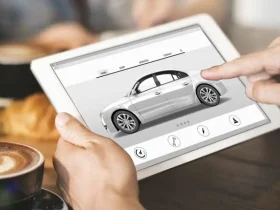Bikepacking is a combination of cycling and backpacking, where you carry all your gear on your bike and set off on an adventure. It’s a great way to explore the outdoors and go off the beaten path. But before you hit the road, it’s important to have the right gear and know some essential tips. Here are some things to consider for a successful bikepacking trip:
Essential Gear
- Bike: The first thing you need for bikepacking is, of course, a bike. Choose a bike that’s sturdy and can handle rough terrain. A mountain bike or a gravel bike is a good choice. Make sure it’s the right size for you and comfortable to ride for long distances.
- Panniers or Bikepacking Bags: You’ll need a way to carry your gear on your bike. You can either use panniers, which are bags that attach to a rack on your bike, or bikepacking bags, which are specially designed bags that attach directly to your bike frame, handlebars, and seat post. Both options have their pros and cons, so choose the one that works best for you.
- Tent or Hammock: You’ll need a place to sleep, so bring a tent or a hammock. A lightweight and compact tent is a good choice for most bikepacking trips. If you’re going to use a hammock, make sure you have a way to attach it to trees or other sturdy objects.
- Sleeping Bag and Sleeping Pad: A sleeping bag and a sleeping pad are essential for staying warm and comfortable at night. Choose a sleeping bag that’s appropriate for the temperature range you’ll be camping in, and a sleeping pad that’s comfortable to sleep on.
- Cooking Gear: If you plan on cooking your own meals, bring a lightweight stove, fuel, and cookware. You can also bring pre-packaged meals that just require boiling water.
- Water Filter or Purification Tablets: Bring a way to purify water, especially if you’re going to be camping in remote areas. A water filter or purification tablets are good options.
- Basic Tools and Repair Kit: Bring basic tools and a repair kit, including a bike pump, spare tubes, tire levers, and a multi-tool. You never know when you’ll need to do some roadside repairs.
- Map and Compass: Bring a map and compass, or a GPS device, to navigate your way. Don’t rely solely on your phone, as you may not have reception in remote areas.
Essential Tips
- Plan Your Route: Plan your route ahead of time, and make sure it’s appropriate for your skill level and the gear you’re carrying. Don’t overestimate how far you can ride in a day, especially if you’re carrying a lot of gear.
- Start Small: If you’re new to bikepacking, start with a short trip close to home. This will give you a chance to test your gear and get used to riding with a loaded bike.
- Pack Light: Every ounce counts when you’re carrying your gear on your bike. Only bring what you need, and try to pack as light as possible.
- Stay Hydrated: Drink plenty of water and bring enough water for your trip. Don’t rely on finding water sources along the way.
- Respect the Environment: Leave no trace and respect the environment. Pack out all your trash, and don’t disturb wildlife or plant life.
- Be Prepared for the Weather: Check the weather forecast before you go, and be prepared for changing weather conditions. Bring rain gear and extra layers if needed.
- Be Flexible: Plans can change, and unexpected things can happen. Be flexible and willing to adapt to changing circumstances.
Bikepacking is a fun and rewarding way to explore the outdoors. With the right gear and essential tips, you can have a successful trip and create memories that will last a lifetime. So, get out there and start pedaling!











